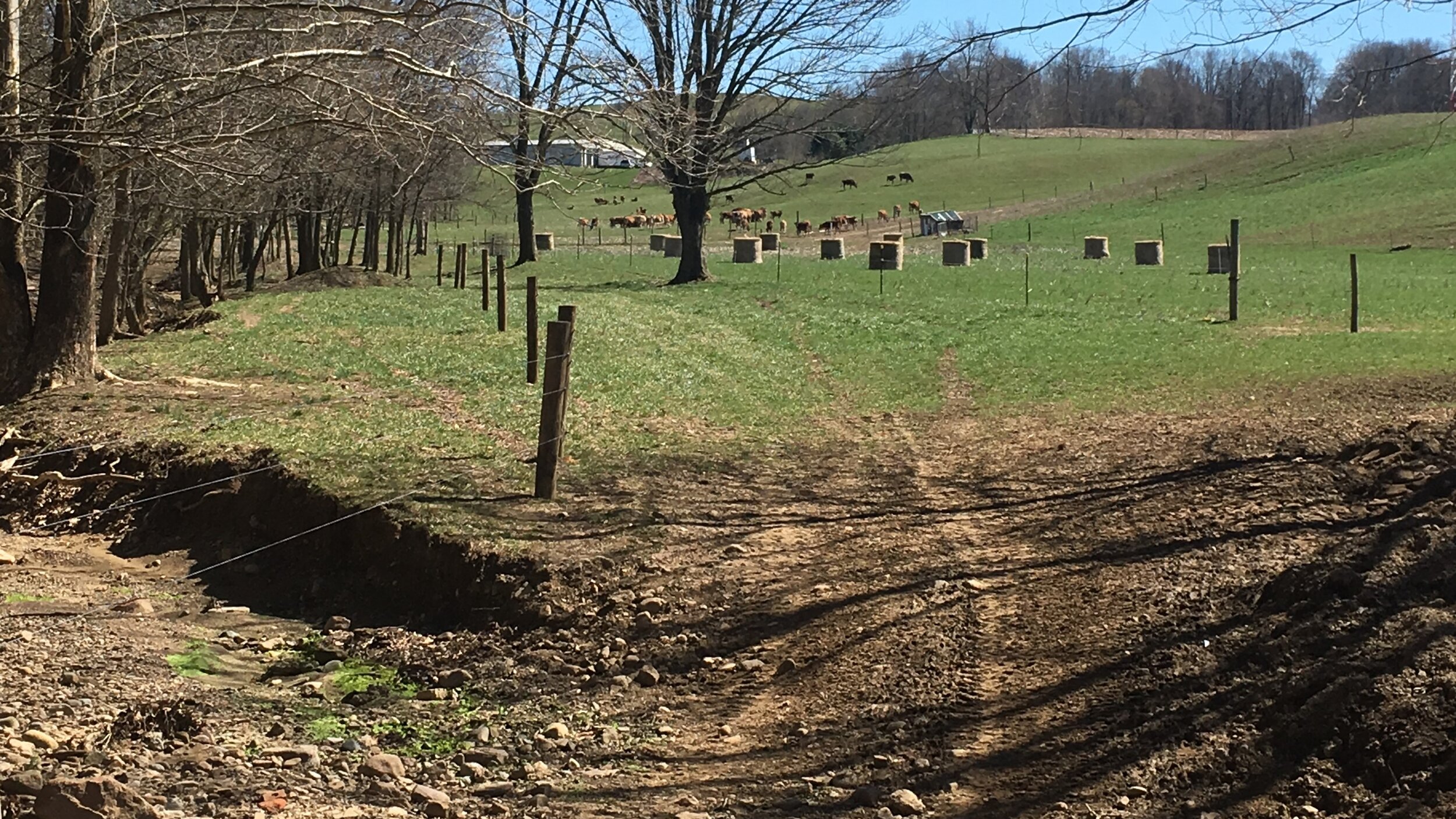“Pool parties” are for people, not livestock: Consider exclusion fencing instead
You don’t have to drive far across Ashland County to see that livestock play an important role in our agricultural economy. And I have to confess: although I always enjoy seeing the different seasons of our county’s grain crops as a drive through the county, it’s the pastures filled with livestock that truly bring a smile to my face.
Unfortunately, what I also see on farms too often are severely eroded stream banks cutting through those pastures and cattle congregating in their own version of a “pool party” in those streams. Although the cartoon vision of a cattle pool party that plays in my head makes me laugh, the reality of the consequences of those cattle in the creeks makes me cringe.
You can see the streambank erosion that had already occurred prior to this livestock stream exclusion fencing project being installed in Holmes County. (Photo courtesy of Holmes SWCD)
One of the most common, most cited sources of impairment to the water quality in Ashland County is bacteria in our waterways. Despite our county’s thriving, river-based tourism economy, the reality is that only 13 percent of the site sampled by Ohio EPA in 2014 met water quality recreational use standards, with bacteria from manure runoff and failing septic systems identified as significant contributors.
One of the simplest practices farmers can install to help reduce manure runoff from entering our waters in livestock exclusion fencing - and the best news is, Ashland Soil and Water Conservation District (SWCD) partners with the Muskingum Watershed Conservancy District (MWCD) to provide 100 percent cost share for up to $10,000 of fencing to producers within MWCD’s jurisdictional boundaries.
If you’re a livestock producer, you may wonder why you should care about excluding your animals from the streams in your pastures. The answer is simple and in two parts: to be a better steward of your land and to improve your bottom line.
Despite the popular narrative that paints farmers as the “bad guys” when it comes to creating water quality issues, there’s not a single farmer than I personally know who does not want to do what’s best for the long-term sustainability and viability of their farm. Excluding livestock from streams helps producers become better stewards in several ways: it reduces streambank erosion and soil loss, it reduces manure runoff and bacteria entering our waterways, and it improves wildlife habitat.
But in addition to those environmental benefits, livestock exclusion fencing can improve your bottom line. After implementing stream exclusion fencing, beef producers commonly see an increase in cattle weight gain, dairy producers see increased milk production (and butterfat) and all cattle producers commonly experience decreased disease presence in their herds.
Replacing on-stream watering with off-stream watering facilities improves the cleanliness and quality of water cattle are consuming. Plus, stream access can expose cattle to harmful organisms, including those that cause foot rot, environmental mastitis, jaundice, fever, red nose, bovine virus diarrhea and tuberculosis.
So with all of these benefits, what’s holding you back? We invite you to join us on September 29 at Sycamore Valley Farms in Ashland for our Conservation Chat: Don’t Fence Me In to learn more about the benefits of installing livestock exclusion fencing and the cost-share opportunities available. The evening will also include a pasture walk with grazing expert Bob Hendershot and a free meal featuring food grown right on-site at Sycamore Valley Farms.
Registration is free, but pre-registration is required to make sure we have enough materials (and food!) on-hand for all participants. For more information or to register, call the Ashland SWCD office at 419-281-7645.



